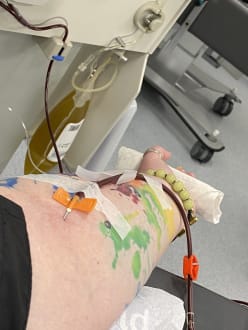Frank Swain has been going deaf since his 20s. Now he has hacked his hearing so he can listen in to the data that surrounds us.
I am walking through my north London neighbourhood on an unseasonably warm day in late autumn. I can hear birds tweeting in the trees, traffic prowling the back roads, children playing in gardens and Wi-Fi leaching from their homes. Against the familiar sounds of suburban life, it is somehow incongruous and appropriate at the same time.
As I approach Turnpike Lane tube station and descend to the underground platform, I catch the now familiar gurgle of the public Wi-Fi hub, as well as the staff network beside it. On board the train, these sounds fade into silence as we burrow into the tunnels leading to central London.
I have been able to hear these fields since last week. This wasn’t the result of a sudden mutation or years of transcendental meditation, but an upgrade to my hearing aids. With a grant from Nesta, the UK innovation charity, sound artist Daniel Jones and I built Phantom Terrains, an experimental tool for making Wi-Fi fields audible.
Our modern world is suffused with data. Since radio towers began climbing over towns and cities in the early 20th century, the air has grown thick with wireless communication, the platform on which radio, television, cellphones, satellite broadcasts, Wi-Fi, GPS, remote controls and hundreds of other technologies rely. And yet, despite wireless communication becoming a ubiquitous presence in modern life, the underlying infrastructure has remained largely invisible
— via redwolf.newsvine.com














 RSS – Posts
RSS – Posts